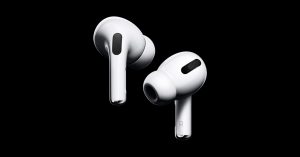The Washington Redskins have been beaten up on the football field this year. With 10 players on the injured reserve list, and quarterback Case Keenum hobbling on a walking cast after hurting his foot in Monday’s loss to the Chicago Bears, many DC-area fans agree this season is a bit grim.
Despite the setbacks, this week Redskins coaches are testing players to see if they can prevent any more injuries this season. Every player jumps, planks, and balances on a special metal force plate that captures a thousand dynamic movement measurements per second. The data will be fed into a software program that uses machine learning to predict whether a player is more likely to get hurt because of an imbalance in anatomy, such as a tight hip on one side or relatively weaker hamstrings as compared to the quadriceps. “It paints a movement signature of where there are risks and opportunities to improve,” says Phil Wagner, CEO and founder of Sparta Science, which developed the technology.
Wagner says 40 professional sports teams are now using his system, including six in the NFL. He says it can predict the likelihood of elbow injury by, say, analyzing how a baseball pitcher jumps, or identify a vulnerable football lineman with laterally weak knees.
“Offensive linemen do a good job of generating force at the beginning of their movement off the line,” says Wagner, a former collegiate football player who later got a medical degree in sports medicine. But overdeveloped quads can make them prone to knee injuries, which Wagner says Sparta can help spot.
After calculating an individual’s score on the three tests, Wagner says the Sparta Science predictive algorithm can determine if a player might need, for example, to increase the flexibility of his or her joints. The team’s coaches then take the scores and prescribe specific exercises. The Redskins test players each week with the Sparta Science force plate and software program, according to head strength and conditioning coach Chad Englehart.
“It allows us to look at each player from an individual standpoint, at that given time,” Englehart wrote in an email to WIRED. “We look at each player’s load, explode, and drive scores, along with other assessments, to write their weekly individualized programs.”
Englehart says Sparta Science is a useful tool, but it’s hard to tell whether it has reduced overall injuries. “We feel it has made a difference in our strength and conditioning program,” Englehart wrote. “But injuries in football are multi-factorial, and therefore, it’s difficult to say that any assessment alone can predict or help reduce injuries in a contact sport such as football.” Still, he says the data from the tests allow an athlete’s training program to become more personalized than it otherwise would be.
One expert says coaches can’t ignore psychological factors, such as the everyday stress of competition, lack of sleep, or even poor coping strategies, that affect a person’s injury risk. “There is a heavy psychosocial component to injuries,” says Eric Hegedus, an expert on athletes returning from injuries at High Point University, in North Carolina. “How stressed you are, how well you are sleeping, what type of personality you have. Whether you are a perfectionist.” All those factors, he says, show a correlation with injury.
Teasing out the specific weak spots that make an athlete prone to injury takes a lot of time, expertise, and money. But some programs believe the Sparta Science system makes a difference. More than 900 varsity athletes at the University of Pennsylvania, from a number of different sports, are taking the force plate tests this fall. According to Brian Sennett, Penn’s chief of sports medicine, the number of medically diagnosed injuries has dropped by 30 percent among the teams that began using Sparta three years ago. But without a controlled experiment to test the program, it’s impossible to know its precise impact.
“We can’t say for sure that the use of it caused the drop,” Sennett says. “There’s more of an association than a cause and effect. Maybe it’s that the coaches that chose to use it are more open-minded.”
Lack of insight into Sparta’s data has also left some teams unclear on its utility. For the past two years, Sparta has been used at the NFL Combine, a four-day event in the spring that showcases the athletic talents of 330 college football players. These top-ranked NCAA players are hoping to make it as pros, so along with doing 40-yard sprints, catching passes, and lifting weights, the athletes do the Sparta balance, plank, and jump tests. The NFL then distributes the data to all 32 teams for recruiting purposes.
“The feedback from the teams that we get is ‘We love it’ or ‘Don’t do that anymore,’ ” says Jeff Foster, president of the NFL Combine. “There’s nothing in between. With Sparta specifically, there’s a group of teams that don’t understand it. In those cases there’s a lot of questions about, what does the data mean and what are the algorithms. We turn them over to Sparta for that.”
Foster says he’s talked to Wagner, the Sparta CEO, about conducting a long-term, controlled study to see whether use of the program can either prevent or predict injuries. That would require following the collegiate athletes for a few years and accounting for all those psychological factors as well—a major data analysis project. In the meantime, the healthy, non-injured, Sparta-tested Redskins will be suiting up against the rival New York Giants, perhaps with a bit more confidence that their bodies will last another week in the NFL.
More Great WIRED Stories
- TikTok—yes, TikTok—is the latest window into China’s police state
- How cities reshape the evolutionary path of urban wildlife
- The iOS 13 privacy and security features you should know
- The “smart kitchen” is very stupid
- Artificial intelligence confronts a “reproducibility” crisis
- 👁 How do machines learn? Plus, read the latest news on artificial intelligence
- 🏃🏽♀️ Want the best tools to get healthy? Check out our Gear team’s picks for the best fitness trackers, running gear (including shoes and socks), and best headphones.



